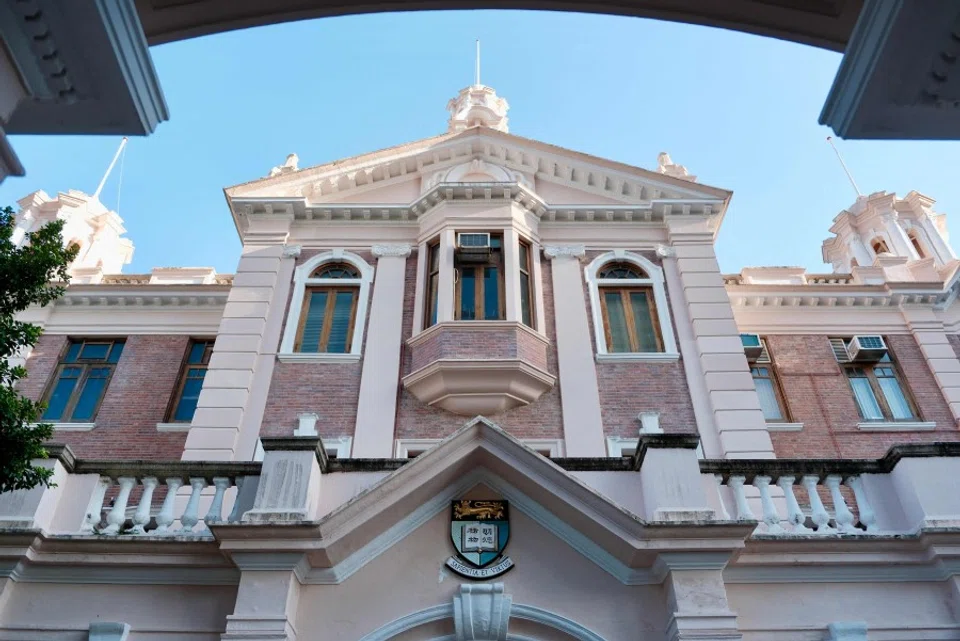Mainland influx tests Hong Kong’s global education ambitions
Hong Kong’s universities are seeing a surge of mainland Chinese students, challenging the city’s goal of a diverse, global education hub while straining housing, services and campus life. Hong Kong academic Vera Yuen ponders the issue.

Hong Kong is fast-tracking a shift in its higher education policy, opening the door to more non-local students and positioning universities as engines for talent and growth. The changes have widened applicant pools and boosted revenue prospects for institutions, but they are also straining housing, campus services and parts of the job market.
In 2024/25, the government doubled the quota for non-local undergraduates at publicly funded universities, raising it to the equivalent of approximately 40% of the local student intake. The 2025/26 Policy Address went further: the enrolment ceiling for self-financing non-local students at each publicly funded post-secondary institution will be raised to 50%, while the cap for non-local research postgraduate students will increase from 100% to 120% of the local student intake.
The boon and bane of more non-local students
Officials pitch the moves as part of the “Study in Hong Kong” campaign to attract talent and build a “university town” for Asia, echoing models where higher education is treated as an export industry. Universities also see an opportunity to grow fee-paying taught master’s programmes and diversify revenue amid tighter public finances.
Common areas are crowded between classes, and canteens report long queues.
The sharp expansion of the non-local admission quota leads to excess demand for dormitory places. With about 192,000 undergraduate and graduate students in 2024/25 and roughly 44,000 dormitory places, around 4.36 students are competing for each bed.
The shortfall has pushed students into the private rental market, adding costs and commuting time and weakening campus cohesion. Universities and private operators are converting hotels and commercial buildings into student hostels, while the government aims to add around 13,000 new dormitory places — though timelines for their completion vary. Rents in neighbourhoods near campuses have risen due to strong non-local demand and limited hostel supply.

Moreover, campus facilities are overloaded. Classrooms, group rooms and computer spaces are running at full capacity. Common areas are crowded between classes, and canteens report long queues. Public dental and medical services are stretched, leading to longer waits and driving more patients to seek costly self-pay private care for faster treatment.
In the self-financed taught postgraduate market, mainland students constitute the overwhelming majority: at some institutions, they exceed 90%...
A temporary exemption allows non-local full-time students to take part-time work without restrictions on hours or work location. After graduation, the Immigration Arrangements for Non-local Graduates (IANG) permit up to 24 months’ stay to seek employment without a prior job offer.
The influx — especially into taught postgraduate programmes — combined with talent schemes such as the Top Talent Pass, Quality Migrant Admission Scheme and Technology Talent Admission Scheme, has intensified competition for entry-level roles. Integration with the Greater Bay Area, rapid artificial intelligence (AI) adoption and uneven sectoral demand have contributed to a softer job market than in 2024.
Mainland students the main target pool
While the campaign targets a global pool, mainland Chinese students dominate inflows because of proximity, established admissions pipelines (including gaokao-based routes), relatively straightforward visa and work arrangements, and cost considerations. Geopolitical frictions and tighter immigration in traditional destinations such as the US and the UK have further boosted Hong Kong’s appeal for mainland applicants.

At the postgraduate level, the mainland share across University Grants Committee-funded programmes is around 63%. In the self-financed taught postgraduate market, mainland students constitute the overwhelming majority: at some institutions, they exceed 90%, including 91.1% at the University of Hong Kong and 93.0% at Lingnan University in 2022/23.
Official tallies may understate the campus presence of students with mainland backgrounds, as some are counted as “local” for administrative purposes — for example, Hong Kong permanent residents born to non-resident parents, or holders of foreign passports.
Observers warn that growth tilted too heavily towards one source market could crowd out applicants from ASEAN, India and beyond.
Measures to preserve international diversity include targeted schemes such as the Belt and Road Scholarship, whose annual quota increased from 100 to 150 places in 2024/25. But the scale is small relative to mainland inflows.
Around three-quarters of first-year non-local undergraduates at public universities now come from mainland China, while the share from other countries has fallen alongside the expansion of non-local caps. The trend has sparked debate over whether Hong Kong can meet its internationalisation goals.
Language and social clustering can leave some students feeling sidelined. Although incoming mainland students meet minimum (English) language requirements and many improve quickly, integration across the wider student body is uneven. Observers warn that growth tilted too heavily towards one source market could crowd out applicants from ASEAN, India and beyond.

Universities and employers are leaning into Hong Kong’s China-facing strengths. In finance, graduates fluent in Putonghua and familiar with mainland regulations are in high demand across functions such as coverage, compliance and origination — supporting everything from secondary and follow-on listings to Stock and Wealth Connect schemes and renminbi-denominated products.
In tech and biotech, expanded lab facilities, increased computing capacity, and strengthened cross-border research links are enabling trials, prototyping and data collaboration with Greater Bay Area institutions. Meanwhile, programmes targeting AI, robotics and biotech are feeding into Shenzhen-linked accelerators and industry initiatives.
Universities are hiring industry-experienced adjuncts and senior managers from major Chinese companies as teaching fellows and mentors...
Fighting to maintain a truly international campus
Market tailwinds — more secondary and follow-on listings from mainland firms, a deeper RMB product stack, and record Stock Connect volumes — are reinforcing these ties. Universities are hiring industry-experienced adjuncts and senior managers from major Chinese companies as teaching fellows and mentors, bringing current regulatory and operational know-how into classrooms and expanding alumni networks that matter for internships and placement.
Supporters say the reforms can power Hong Kong’s comeback if universities pair scale with quality and integration. Critics warn that housing shortages, overstretched services and a narrowing international mix could undermine the city’s appeal. The policy question now confronting officials and institutions is how to sustain growth while preserving a genuinely international campus — keeping recruitment from ASEAN, India and beyond in the frame even as mainland demand remains the dominant force.





